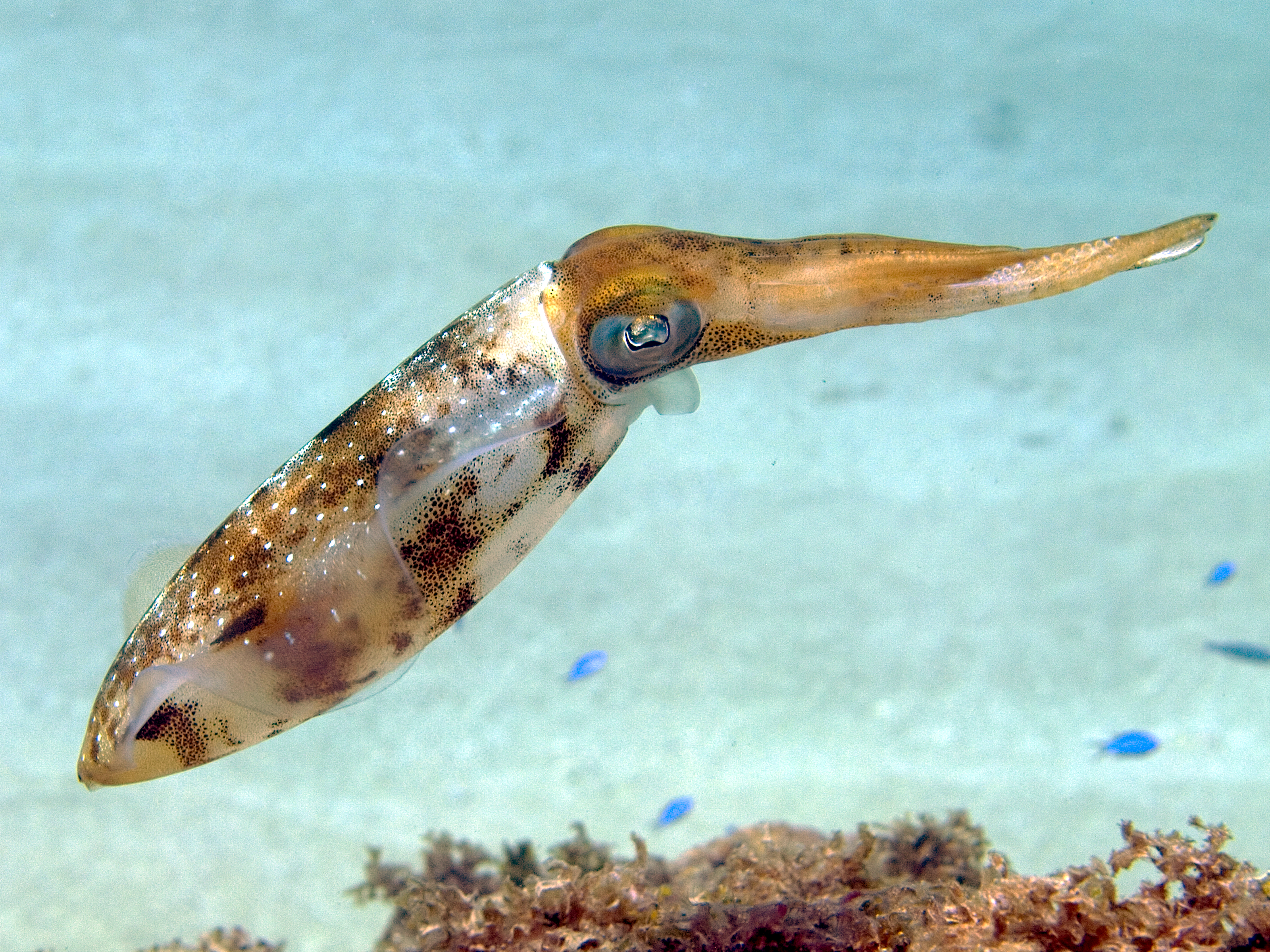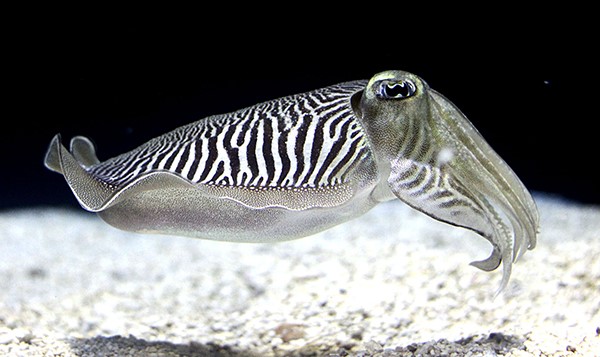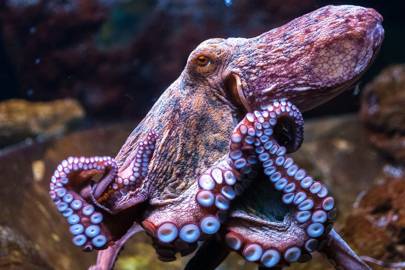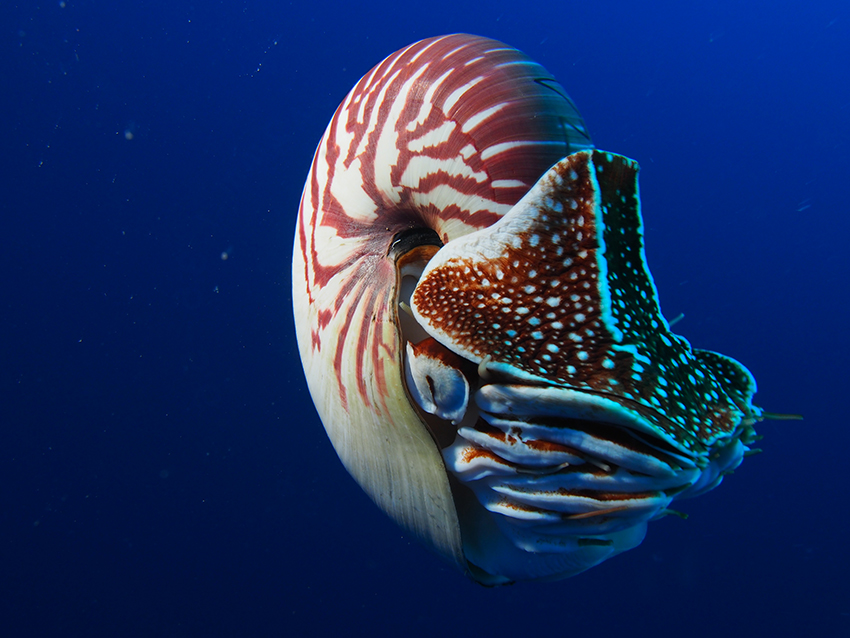I suppose it is.
The thing with me is, if I’m fascinated by something, I want to know more and more about it. I love Moby Dick for example, so I read Philip Hoare’s book about whales, watched Blue Planet about whales, and went whale-watching in Whitby, and I read other works by Melville. Or I discovered Ingmar Bergman, so now I’ve seen 17 films by him, read his biography The Magic Lantern, and read multiple books about his works.
Certain things wear off after some time, like with whales, but it was fun whilst it lasted (my love for Melville remains, though).
So, back to cephalopods—this class includes octopuses, cuttlefish, squids, and nautiluses.
Squids:



2 tentacles and 8 arms
Have ink
In Vietnamese, squids are called mực, which means ink
Blue-green blood
Can change colours but not as well as cuttlefish
3 hearts
Cuttlefish:



2 tentacles and 8 arms
The most colourful of cephalopods
W-shaped eyes
Colour-blind
Have a cuttlebone
Have ink
In Vietnamese, also called mực (like squids), which means ink
Blue-green blood
3 hearts
Unlike octopuses, cuttlefish don’t tend their eggs but glue them to rocks and leave them
Octopuses:



8 arms (though some scientists say 6 arms and 2 legs)
Can smell and taste with their arms
3 hearts
Have ink
Blue-green blood
Less colourful than cuttlefish but have no bone, can take almost any shape and can change texture of their skin
Master of camouflage
Colour-blind
Horizontal pupils
Highly complex nervous system (500 million neurons)
Females tend their eggs for their remaining days and die
Smartest of cephalopods: can solve puzzles, recognise individual humans, open a jar from inside, fit through anything as long as the beak fits, use tools, manipulate objects, and so on.
Also, I didn’t think I’d ever say this, but this is a very beautiful octopus:
The octopus is called Freya and this was at New England Aquarium, the one mentioned in The Soul of an Octopus.
Nautiluses:


I know absolutely nothing about them except that they have shells and have remained relatively unchanged for millions of years (the closest to the 1st cephalopods that appeared, compared to octopuses or cuttlefish).
Compared to other cephalopods, they’re not particularly smart, and therefore not really interesting.
_______________________________________
Look at this sad passage from Other Minds, chapter 7, “Experience Compressed”:
“A strange-looking rock-dwelling fish that inhabits the same patch of sea as my cephalopod is from a group that includes fish who live to 200 years of age. 200! This seemed extraordinarily unfair. A dull-looking fish lives for centuries while the cuttlefish, in their splendor, and the octopus, in their curious intelligence, are dead before they are 2?”What is the point of such a complex nervous system when they have a lifespan of 2-3 years? Their intelligence just goes to waste.
Peter Godfrey-Smith goes on:
“Nautiluses, the elegant but psychologically unimpressive cephalopods who steer their shells like submarines around the Pacific, can live for more than 20 years. That is several drawn-out decades of life for what biologists, unflatteringly, have called a “smell-and-grope scavenger”. These animals are relatives of octopuses and cuttlefish, and they are not rushing through their lives at all.”This is ridiculous.
terrific post! the photos are spectacular... such interesting creatures, and all stemming from evolution... nature does have mysterious ways in reaction to environmental stimuli... have read any Darwin?
ReplyDeleteThanks. They are so fascinating, yeah.
DeleteI haven't read Darwin.
I hope you can still read comments here, this is an old post. I just found your blog today and I love the background on your blog. I have always been fascinated by cephalopods, especially the cuttlefish! Thank you so much for sharing.
ReplyDeleteThat's great. Welcome to my blog.
DeleteOther blog posts about sea creatures are under the tag "sea creatures", though I think my favourites are octopuses.
I haven't written about them for some time though. My blog is mostly about Shakespeare and classic literature now.